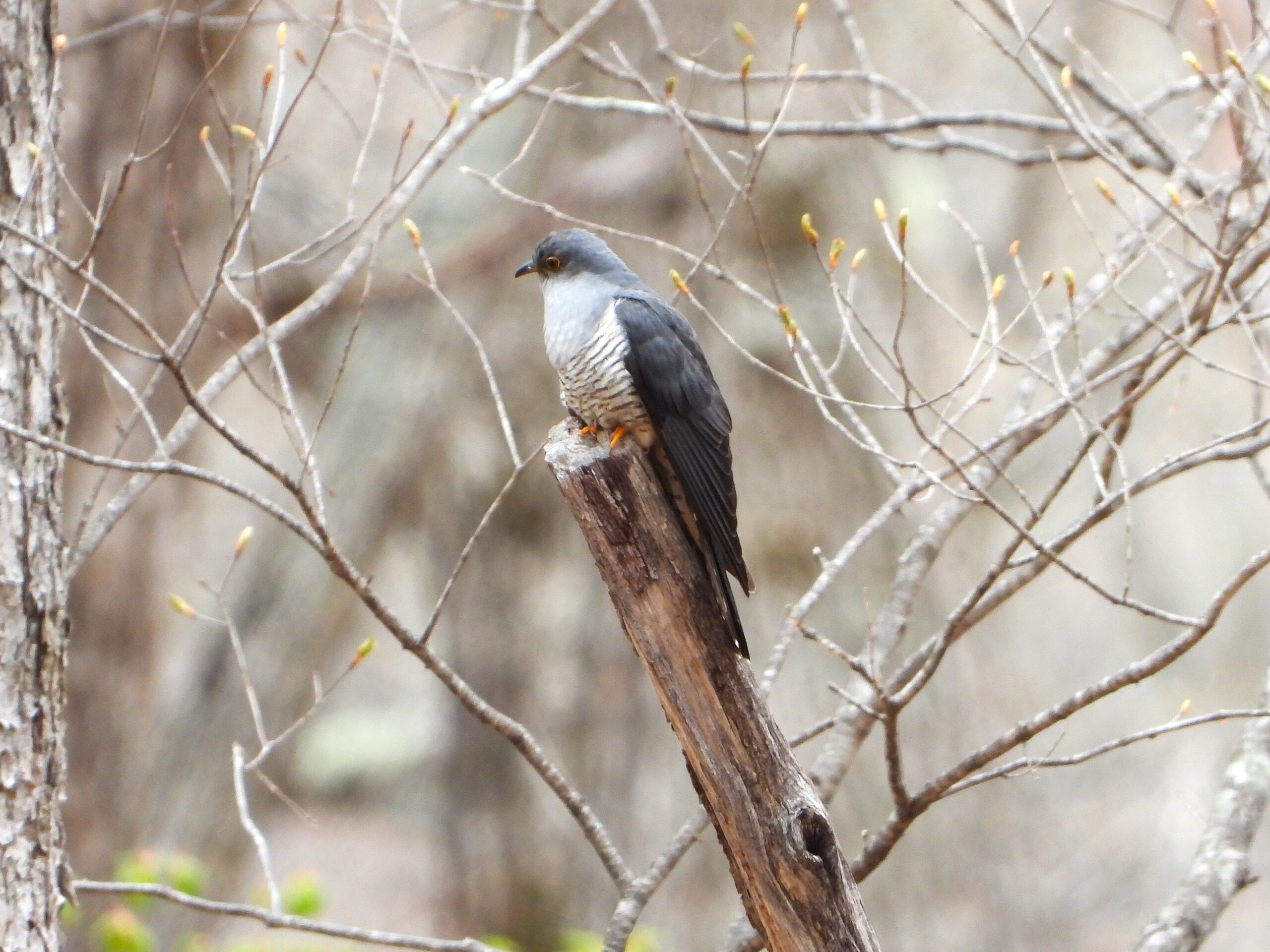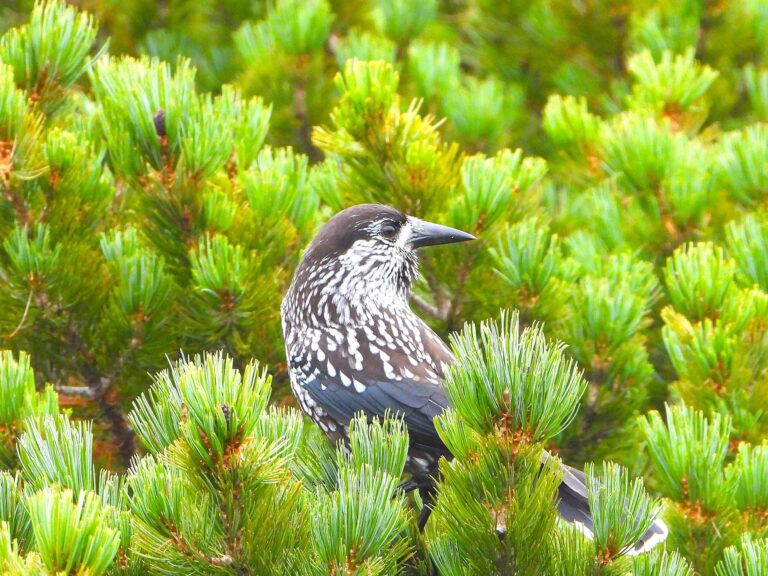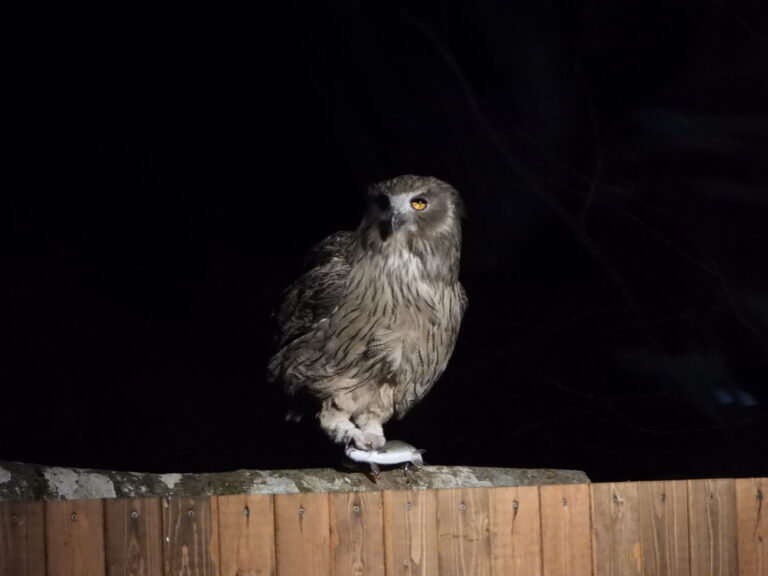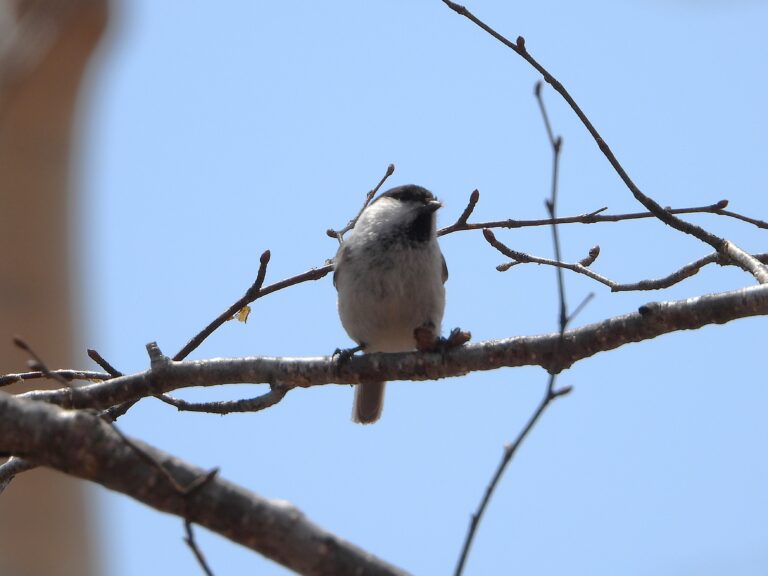Oriental Cuckoo (Cuculus optatus) – Wildlife of Japan
Introduction
The Oriental Cuckoo (Cuculus optatus), known in Japan as “Tsutsudori,” visits Japan’s mountain forests every summer. Its deep “po-po” call echoes through the trees like tapping a bamboo tube. The Japan Ornithological Society now recognizes it as a species separate from the Himalayan Cuckoo (Cuculus saturatus).
Appearance
This cuckoo is about 33 cm long with a wingspan of 55–60 cm. It has a gray head, pale belly with dark bars, and a long tail with white tips. The yellow eyes stand out against the gray feathers.
Females sometimes show a reddish-brown morph. Compared to the Lesser Cuckoo, it looks bigger and its call is slower and deeper.
Habitat & Distribution
It breeds across Japan, from Hokkaido to Shikoku, favoring cool forests with tall broadleaf trees. The bird arrives in late April and leaves by September.
Outside Japan, it ranges across Siberia and northeastern Asia, migrating to Southeast Asia and Indonesia for winter.
Where to See in Japan
You can hear the Oriental Cuckoo in mountain forests of Hokkaido, Nagano, and Fukushima during early summer. At dawn or after rain, its “po-po” call carries through the valleys.
During migration, it sometimes visits lower areas such as riversides, temple woods, or city parks rich in caterpillars.
Behavior
This bird stays high in the forest canopy, flying quietly from branch to branch. Its “po-po” call is slower and deeper than the Lesser Cuckoo’s.
It lays its eggs in the nests of small insect-eating birds. In Japan, the main host is the Eastern Crowned Leaf Warbler. In Hokkaido, it sometimes uses the Japanese Bush Warbler. The female removes one host egg and replaces it with her own.
Diet
The Oriental Cuckoo feeds mainly on caterpillars, including hairy ones other birds avoid. It also eats beetles and soft-bodied insects. This helps control forest pests naturally.
Reproduction
The female lays a single egg in a host nest and leaves. The chick pushes out the host’s eggs or young soon after hatching.
In northern Japan, egg color changes to match the host’s—a smart adaptation that increases survival. By August, young birds start their journey south.
Conservation
The IUCN lists the Oriental Cuckoo as Least Concern (2024). It is still common in Japan, but forest loss or host decline could affect it.
Protecting healthy woodlands and warbler habitats is key to its future.
Author’s Impression
I met this bird high in the mountains. Its rhythmic “po-po” call echoed through the valley, a familiar sound in Japan’s summer forests. The call is easy to hear, but seeing the bird is much harder—it hides in tall trees.
If you wish to find one, listen first and move quietly. Patience and silence are the best ways to spot this elusive bird.







